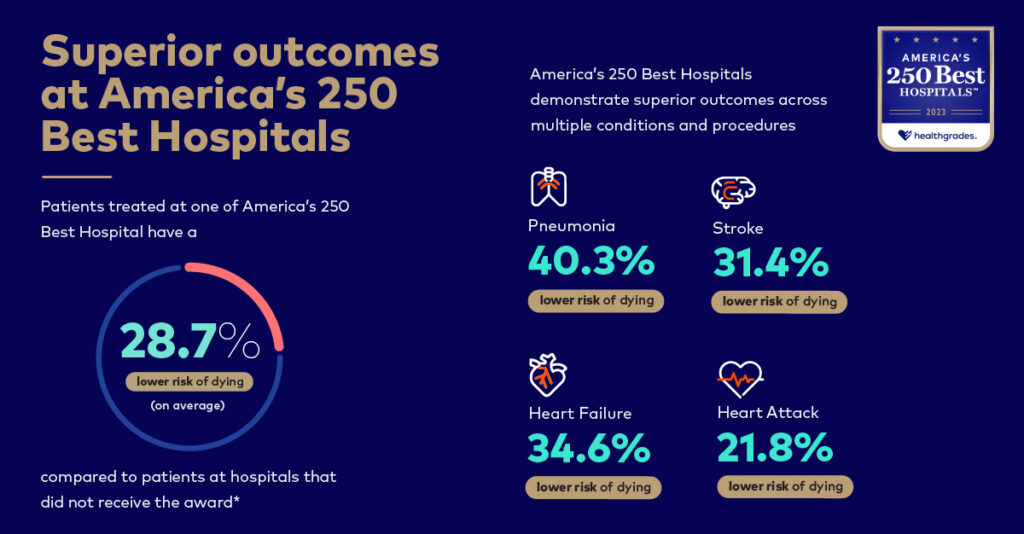Since 1998, Healthgrades has been helping consumers evaluate and compare hospital performance for care provided during a hospital stay for specific conditions or procedures.
Our hospital quality ratings and awards give consumers the transparency to make informed choices about where to seek care.
But what goes into achieving an America’s 250 Best Hospital Award™?
If you’re a scientific type and want to read all the details of why our methodology is the most rigorous (and impartial), you can read the full methodology. Otherwise, keep reading for an overview on how the process works.
By The Numbers
To get a quick overview of how we rate hospitals, let’s start by looking at the numbers:
- Our analysis is based on 45+ million Medicare medical claims for the most recent three-year period available.
- We get our data from nearly 4,500 hospitals nationwide.
- Hospitals can neither opt-in nor opt-out, nor can they submit their own data.
- Healthgrades has comprehensive healthcare expertise and rates hospitals across 31 conditions and procedures — that’s a lot of specialties!
Hospital quality is not a popularity contest
We don’t consider the reputation of the institution or any financial information. Our scientific and transparent methodology focuses on what matters most to patients: clinical outcomes.
Methodology Simplified
Our methodology* works like this:
- Patient groups are identified by ICD-10-CM (this stands for International Classification of Diseases, Tenth Revision, Clinical Modification) codes. It’s the system used by healthcare providers to classify and code all diagnoses, symptoms, and procedures, everything from headaches to hypertension.
- Identify the mortality and complications outcomes for 31 different conditions or procedures.
- Develop a list of potential risk factors. These include comorbid conditions (existing conditions like heart disease), demographics (such as age and gender), procedural risk factors (for example, single vs. bilateral knee replacement), and admission sources (such as patient transfers).
- Use a Logistic Regression (Wald Backward Stepwise if you’re keeping score) to identify risk factors that are statistically significant in predicting outcomes.
- Apply the logistic regression model to the data set to derive the predicted outcome by hospital.
- Compare the actual outcome to the predicted outcome to calculate a z-score.
- Create a weighted average score by combining the outcome z-scores of at least 21 of the 31 conditions or procedures rated for a facility.
- The overall combined scores are then ordered from highest to lowest to identify the top 250.
Why Hospital Quality Matters
When it comes to choosing healthcare, quality saves lives, which is why Healthgrades is committed to delivering the most scientifically accurate and comprehensive information about doctors and hospitals — with data insights not available anywhere else. By offering easy access to data-driven hospital ratings, Healthgrades connects consumers with the providers and hospitals who are right for their care needs. This is particularly important as the gap between the nation’s highest and lowest performers continues to grow.
America’s Best Hospitals at a Glance

Hospital quality definitely makes a difference!
For more information about how Healthgrades rates hospitals, contact us at full methodology.





